Why does Stockton have so many empty shops? BBC1 tonight at 7.30 might have some answers…
Those of you in the North East and Cumbria (or anywhere else with access to Freesat), may be interested in watching BBC1 at 7.30 pm tonight (Monday 6 December)! [UPDATE: The programme is now available to watch on iPlayer.]
The regional Inside Out programme includes an interview with me as part of a feature on the state of the North East’s high streets; coincidentally, the programme also has a report (not involving me) on the transformation of Robbs of Hexham, under the new ownership of Beales.
The high street theme is running across all the regional editions of Inside Out this week – in the BBC South version, for example, Claire Robertson from Wellworths is making an appearance, talking about Dorchester’s success in maintaining a very low number of empty shops.
The programmes’ timing deliberately coincides with the release of new research into empty shop rates that the BBC commissioned from the Local Data Company, as well as with the impending second anniversary of Woolworths’ demise – hence the BBC asking me if I’d be willing to be involved.
I had a really enjoyable and interesting day filming with the BBC in Stockton and Hartlepool – happily just before all the current snow and ice kicked in. The reason for filming in Stockton was its dubious honour of having nearly 30% of its town centre shops empty – one of the highest proportions of any of the 500 town centres covered by the LDC survey. My job was to provide some insight into why Stockton has such a high vacancy rate – building on my August blog post on that topic – as well as commenting on the success of those discount retailers, like B&M Bargains in Stockton, that have taken over old Woolies sites across the region.
As you know from my previous comments, I have rather a fondness for Stockton town centre. Its unusually wide High Street is one of the best urban spaces anywhere, and it is lined by some beautiful – if sometimes neglected – buildings.
Equally, visit the Castlegate Shopping Centre, where we started our filming, and you can also be forgiven for wondering where the LDC got its figures from. Though very much based around a value offer (including Wilkinson, Poundland and Home Bargains, as well as B&M), there are hardly any vacant units and the mall was really busy with shoppers on the Monday morning that we were there.
Nevertheless, walk the length of the High Street towards the empty Globe Theatre and the number of vacant units does start to add up. In Wellington Square, Stockton’s newer shopping centre, I counted at least 15 (mostly smaller) empty units, despite the presence of strong anchors such as Debenhams, New Look, H&M and (a modernised) M&S. Around the corner, in the High Street itself, one particular stretch includes only one permanent shop in a row of six units that are otherwise either empty or to let. With these kinds of numbers, the LDC findings begin to make sense.
So, why does Stockton have so many empty shops? When the BBC’s Chris Jackson asked me this question while filming in front of some of these vacant units, I suggested that it was down to a combination of factors.
While it’s easy to blame out-of-town retail, it’s certainly true that Stockton town centre has to compete with an unusually large number of out-of-town stores, both at Teesside Shopping Park and Portrack Lane. This doesn’t stop some retailers, such as M&S, having a presence both in-town and out – indeed, even B&M has just opened a Homestore in part of the old Big W at Portrack Lane, obviously seeing this as complementary to its Castlegate shop.
However, other retailers that could conceivably have a Stockton town centre presence, like Next and TK Maxx, already have stores at Teesside Shopping Park instead. Factor in the competition from Middlesbrough’s strong retail centre just four miles away, and it’s easy to frame Stockton as having a town centre that is simply too large for its current needs. Imagine that Stockton’s empty shops could be magicked away, with those that remain compressed into a smaller footprint. Without the distraction of the empty units, what you would see is a pretty strong retail offer for a place of Stockton’s size. Indeed, there are plenty of towns that would love to have both Debenhams and M&S on their high street, as Stockton still does.
As I explained to Chris, however, Stockton’s situation is not all down to local factors. There’s little any place can do when quite a number of its empty shops – such as a former Ethel Austin, Leveys, Rosebys, Au Naturale and Internacionale – are the consequence of weak retailers collapsing or struggling at a national level. Unfortunately, such names tend to be disproportionately represented in more secondary or less affluent retail locations rather than in major city centres, exacerbating the problem of empty shops in those places that often most need a retail fillip.
However, work already underway in Stockton provides some optimism for the future. The local council seems to recognise what needs to be done, improving the appearance of empty shops to minimise their blighting effect on the town centre, and supporting the transformation of the derelict Globe Theatre into a venue that draws people into that part of the High Street. All this is helped by the fact that Stockton High Street offers such a unique and impressive setting.
In contrast, Hartlepool’s town centre, where we filmed later in the day, suffers from having much less richness and character, due to its town centre basically being the Middleton Grange shopping centre. As with other homogeonous town centres such as Washington, this inevitably limits the options for retailers looking to enter Hartlepool, particularly those that would prefer a bustling high street location to an enclosed mall. After all, there must be some reason why Hartlepool’s large Woolworths site remains empty at the same time as many big names (and potential occupants) – such as BHS, H&M, TK Maxx and TJ Hughes – remain absent from the town.
Though parts of Middleton Grange are bright and busy, it suffers from being largely inward facing, and from having inadequate physical connections with the surrounding area. It is around these edges – notably in the dismal Market Walk area – where Middleton Grange seems to have its largest number of empty units.
I love the vibrancy of Hartlepool Marina, as well as the pleasing architecture and townscape of Church Square and Church Street (part of Ralph Ward Jackson’s original town centre for West Hartlepool – more of which in an upcoming post). However, getting to these places on foot from the town centre is stymied by a succession of busy roads, despite the distance not being very great. For the same reason, I suspect few of those who visit the Marina, Museum of Hartlepool or HMS Trincomalee make it over to the town centre.
Apart from making Hartlepool less hard to navigate, an important point I made on camera related to the town’s lack of a department store. Go back twenty years, and Hartlepool had Binns (House of Fraser) as well of Uptons, anchoring either end of Middleton Grange.
Today, the Binns site is occupied by Wilkinson, and the old Uptons is a Co-op Home Store – basically one of Anglia Co-op’s Westgate Department Stores, but with only home-related departments and no fashions. If Hartlepool is to prevent the leakage of shoppers to centres such as Middlesbrough and Sunderland, this is a gap that really needs to be filled.
Having said all this, I’m not entirely sure how much of the filming is going to be used in the programme tonight – I know that the need to report on the impact of the current cold weather has meant that the retail features have, unfortunately, had to be trimmed. Let’s just hope that Inside Out doesn’t feel a late urge to report on Newcastle United sacking yet another manager earlier this afternoon…


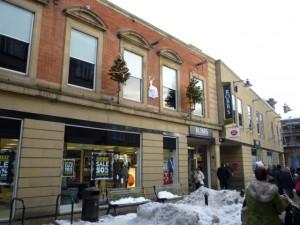
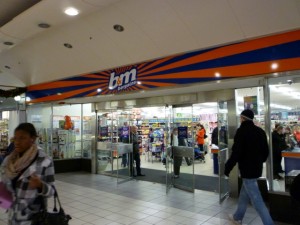
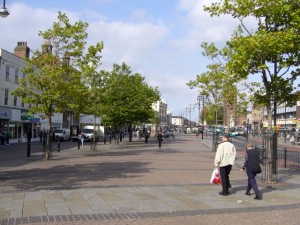
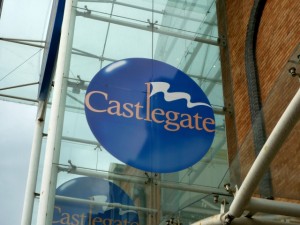
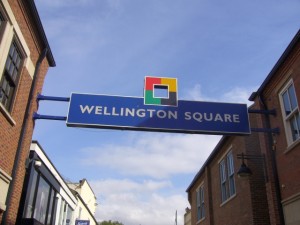
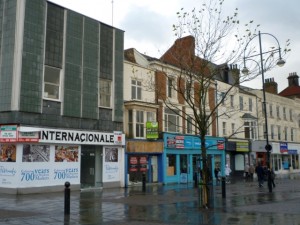
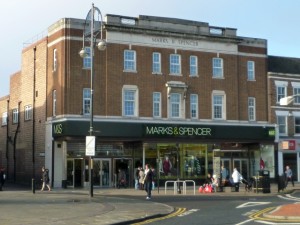
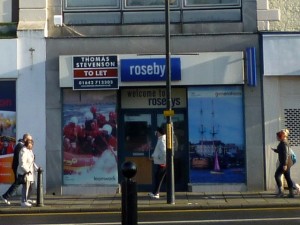
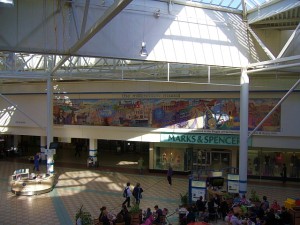
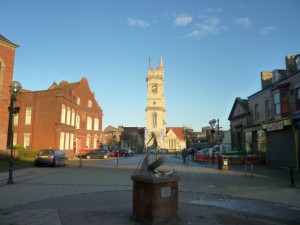
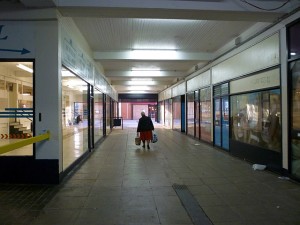
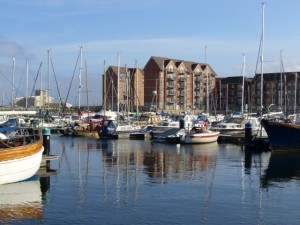
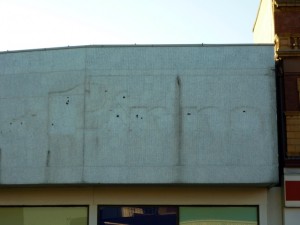

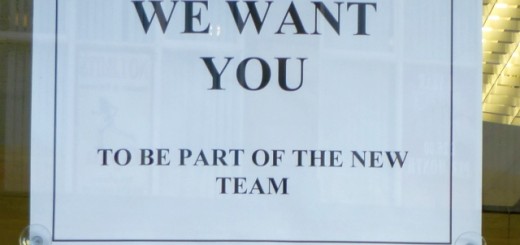

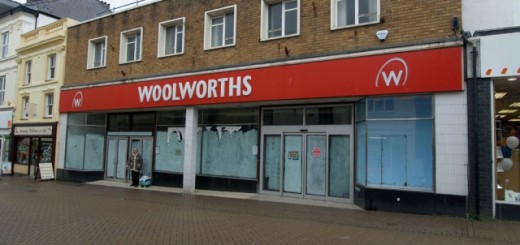
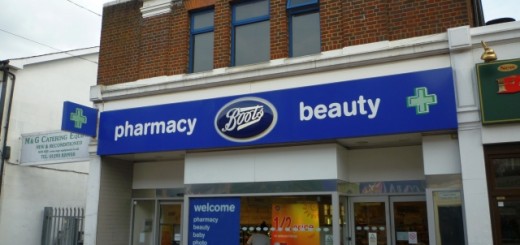



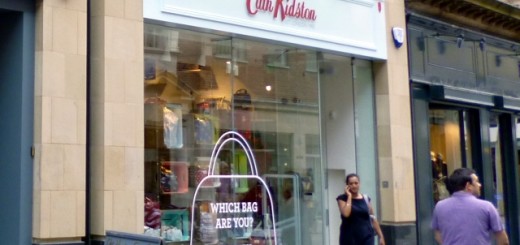
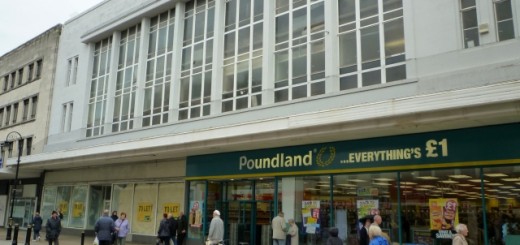
Great piece on Stockton and Hartlepool. Both used to be really good shopping centres.
Interesting reading, although my home town is Ashby de la Zouch in the Midlands. I (and my wife) have a fondness for the Redcar/ Teesside region and always aim to visit at least once a year, although we’ve been unable to do so this year due to a family illness. I’m a rare breed of man – one who loves shopping and have several ports of call when in the region. Apart from Redcar, where we first discovered Home Bargains, Middlesbrough, Guisborough and Darlington are definite places to call into. Been into Stockton a couple of times also. Like you I like its wide main street – Ashby is similar, although on a smaller scale as you may have noticed on your flying visit. Find Stockton’s a bit spread out though with ‘gaps’ between the shopping areas.
On our visit last year though my biggest disappointment was a trip to Hartlepool, on reading on a website that Hartlepool possessed one of the biggest shopping centres in the North-East, we set off for Middleton Grange. We found it to be one the most bland, depressing shopping centres we’ve ever been to. We were barely there a hour before we left – sorry Hartlepool, love your historic Quay development but not your shopping centre.
Last year we also ventured into Stanley – only because of the presence of one of the three Argos owned Clearance Bargains stores – the other two are down my end of the country at Corby and Walsall. Had a quick scout around the main street in Stanley before calling in to Chester Le Street on the way back.
Boyes is a store we ‘discovered’ in Teesside, always return home with at least a couple of bargains -usually with a plug on!- from Boyes. Darlington,Guisborough being my favourite branches. Boyes have opened a store in Leics. recently, at Melton Mowbray.
A stop off on the way home is the town of Northallerton -in my mind the jewel in the crown of North Yorkshire. Again, another wide main street with a good variety of independent stores -Maxwells elctrical a good example, a good market plus the usual chain stores.
Like Ripon, plus Harrogate too but there are only so many places the wife will let me call into!
Hope my observations of the North-East have been of some interest to you.